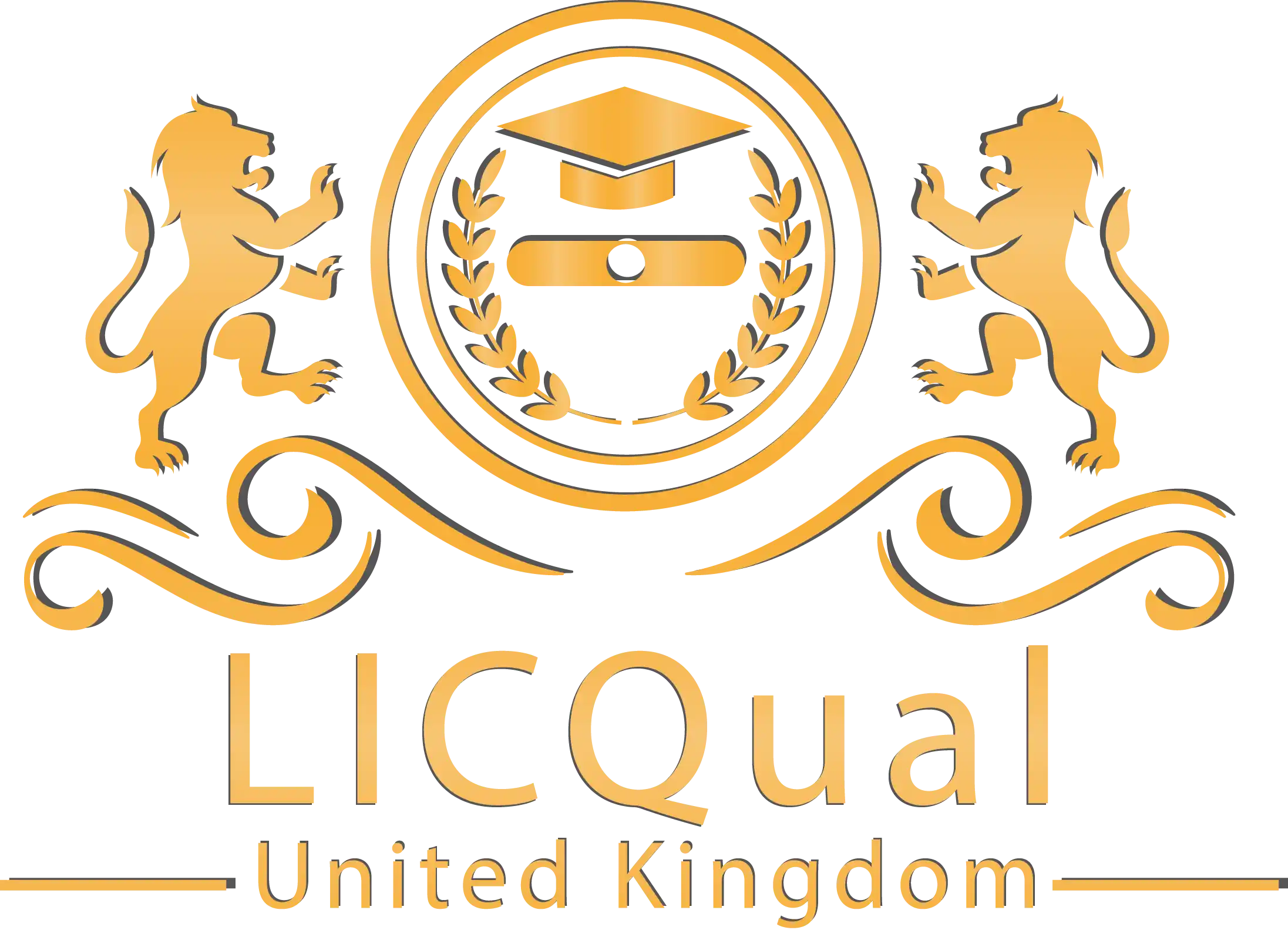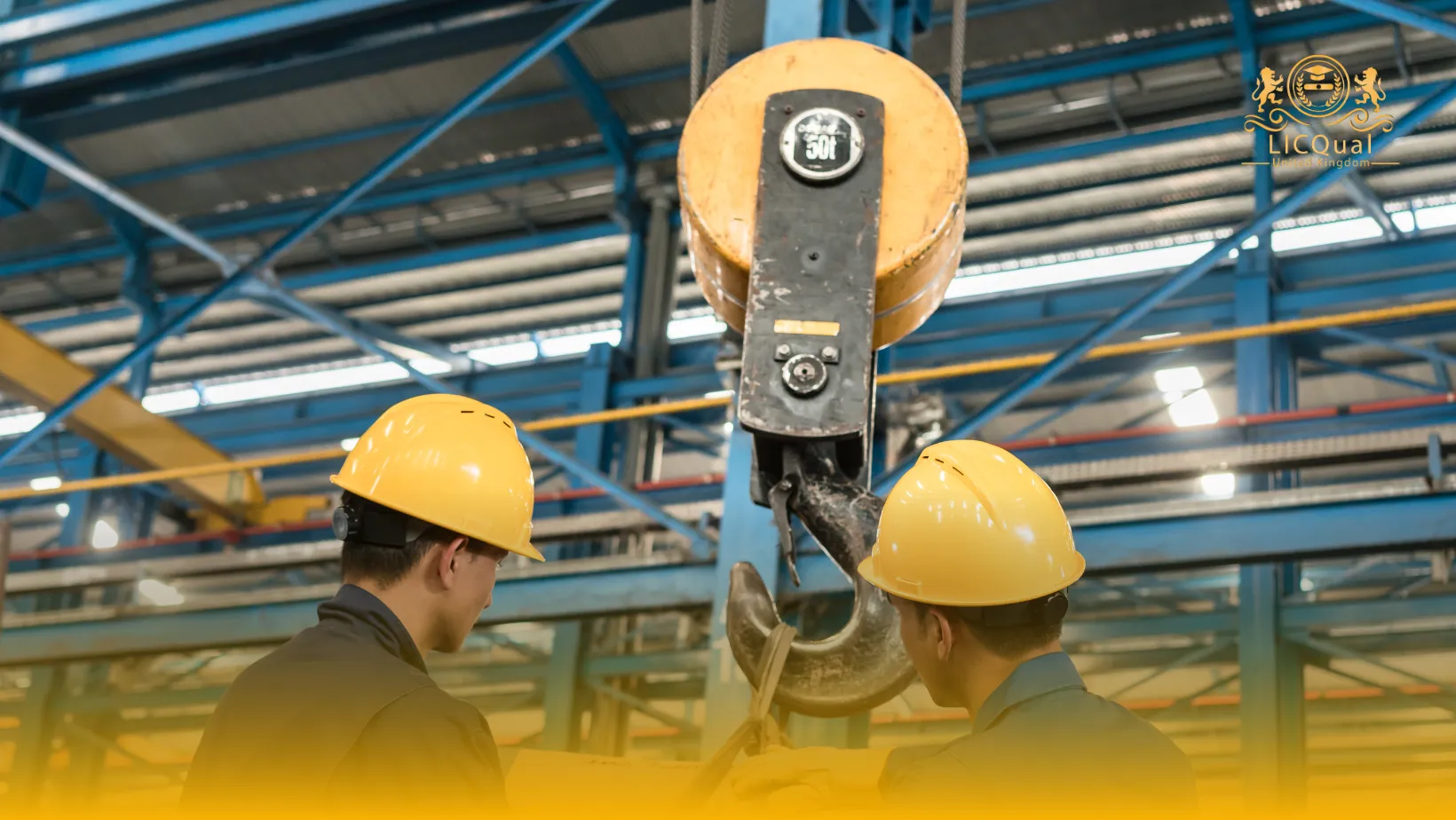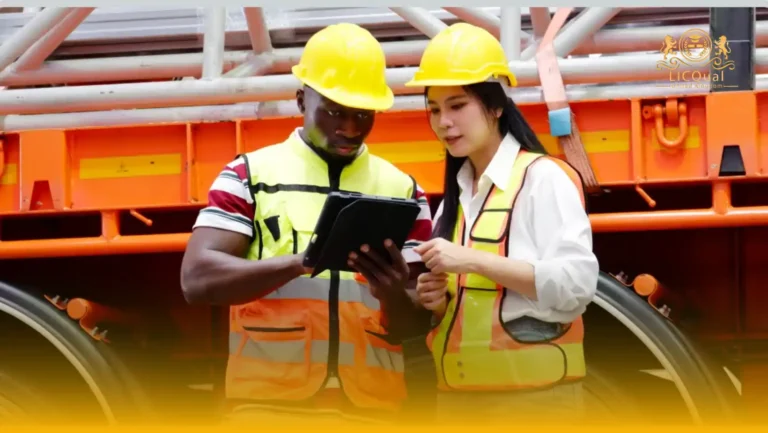The LICQual Level 3 Certificate in Manual Lifting Machines (MLM) is a globally recognized qualification designed for professionals who operate, inspect, or manage manual lifting equipment such as chain blocks, lever hoists, manual winches, and pulley systems. This course provides essential technical knowledge and practical skills to ensure the safe and effective use of manual lifting machines in compliance with international safety standards. Whether you’re working in construction, manufacturing, logistics, or offshore environments, this certification will add credibility and competence to your professional profile.
This comprehensive training covers a wide range of topics including equipment identification, operational techniques, inspection and maintenance procedures, and legal requirements. Learners will understand load limits, mechanical advantages, and safe handling practices through both theoretical learning and hands-on exercises. The curriculum is designed in alignment with standards such as LOLER, ISO, OSHA, and manufacturer guidelines, making it highly applicable across industries and regions.
The LICQual MLM course is perfect for manual lifting machine operators, safety officers, riggers, and inspection personnel who are responsible for the daily use or oversight of non-powered lifting equipment. It’s also suitable for supervisors and engineers who wish to enhance their understanding of safe lifting practices and equipment compliance. No matter your level of experience, this course equips you with the knowledge and certification to meet workplace safety and legal requirements.
Upon successful completion, learners will receive the LICQual Level 3 Certificate in Manual Lifting Machines, an internationally respected qualification that opens doors to new job opportunities and career advancement. Certified professionals are in high demand across construction sites, industrial plants, shipyards, and oil & gas projects. Invest in your future by gaining the skills and credentials needed to work safely, confidently, and professionally in any lifting environment.
Course Overview
Qualification Title
LICQual Level 3 Certificate in Manual Lifting Machines (MLM)
Total Units
6
Total Credits
24
GLH
120
Qualification #
LICQ2200531
Qualification Specification
To enroll in the LICQual Level 3 Certificate in Manual Lifting Machines (MLM) applicants must meet the following criteria:
|
Qualification# |
Unit Title |
Credits |
GLH |
|---|---|---|---|
|
LICQ2200531-1 |
Introduction to Manual Lifting Machines and Their Applications |
4 |
20 |
|
LICQ2200531-2 |
Safe Operation of Manual Lifting Equipment |
4 |
20 |
|
LICQ2200531-3 |
Inspection, Maintenance, and Fault Identification |
4 |
20 |
|
LICQ2200531-4 |
Load Limits, Lifting Angles, and Mechanical Advantage |
4 |
20 |
|
LICQ2200531-5 |
Legal and Regulatory Compliance in Manual Lifting Operations |
4 |
20 |
|
LICQ2200531-6 |
Handling, Storage, and Environmental Considerations |
4 |
20 |
By the end of this course, applicants will be able to:
1. Introduction to Manual Lifting Machines and Their Applications
By the end of this unit, learners will be able to:
- Identify different types of manual lifting machines such as chain blocks, lever hoists, and pulley systems.
- Explain the basic principles and mechanical functions behind manual lifting operations.
- Recognize the typical applications of manual lifting machines across various industries.
- Understand the importance of selecting the right tool for specific lifting tasks.
2. Safe Operation of Manual Lifting Equipment
By the end of this unit, learners will be able to:
- Operate manual lifting machines in accordance with international safety procedures.
- Perform pre-use checks and follow standard operating practices.
- Recognize unsafe lifting practices and apply corrective actions.
- Understand user responsibilities to prevent equipment misuse and workplace accidents.
3. Inspection, Maintenance, and Fault Identification
By the end of this unit, learners will be able to:
- Conduct routine inspections to identify mechanical faults and wear.
- Follow industry-recommended maintenance procedures and schedules.
- Apply rejection criteria to determine the fitness of equipment for use.
- Accurately document inspection findings in compliance with regulations.
4. Load Limits, Lifting Angles, and Mechanical Advantage
By the end of this unit, learners will be able to:
- Calculate safe working loads (SWL) and understand equipment-rated capacities.
- Assess the impact of lifting angles and load positioning on lifting performance.
- Apply principles of mechanical advantage in manual lifting scenarios.
- Avoid overloading and imbalance by correctly configuring lifting setups.
5. Legal and Regulatory Compliance in Manual Lifting Operations
By the end of this unit, learners will be able to:
- Identify and interpret key legal requirements and industry standards (e.g., LOLER, OSHA, ISO).
- Understand the roles and responsibilities of operators, employers, and inspectors.
- Maintain and verify documentation such as inspection logs and certificates.
- Ensure all lifting activities are conducted in compliance with applicable laws and best practices.
6. Handling, Storage, and Environmental Considerations
By the end of this unit, learners will be able to:
- Handle manual lifting machines safely during transport and storage.
- Implement best practices to prevent equipment corrosion, deformation, and damage.
- Recognize environmental risks (e.g., humidity, dust, chemicals) that can affect equipment performance.
- Extend the service life of lifting machines through proper care and storage procedures.
The LICQual Level 3 Certificate in Manual Lifting Machines (MLM) is designed for individuals who are involved in or responsible for the safe use, inspection, and management of manual lifting equipment. This includes professionals across a range of industries where manual lifting devices are frequently used.
This course is ideal for:
- Manual Lifting Equipment Operators
Individuals who regularly use chain blocks, lever hoists, or manual winches and need to ensure safe and proper operation. - Riggers and Mechanical Handling Personnel
Those working in rigging, mechanical lifting, or heavy equipment support roles on construction sites, offshore platforms, or in warehouses. - Safety Officers and HSE Professionals
Personnel responsible for enforcing lifting safety standards, conducting inspections, and ensuring legal compliance in lifting operations. - Maintenance and Inspection Technicians
Workers tasked with maintaining, inspecting, or certifying manual lifting machines according to regulatory requirements. - Supervisors and Team Leaders
Individuals overseeing lifting operations or managing teams who use manual lifting machines and need a clear understanding of safety and legal responsibilities. - Career Starters and Skill Enhancers
New entrants to the lifting or construction industry, or professionals seeking to upgrade their qualifications for better job opportunities or promotions.
Whether you’re working in construction, oil and gas, logistics, marine, or industrial maintenance, this course equips you with the internationally recognized skills and certification needed to operate safely and effectively.
Assessment and Verification
All units within this qualification are subject to internal assessment by the approved centre and external verification by LICQual. The qualification follows a criterion-referenced assessment approach, ensuring that learners meet all specified learning outcomes.
To achieve a ‘Pass’ in any unit, learners must provide valid, sufficient, and authentic evidence demonstrating their attainment of all learning outcomes and compliance with the prescribed assessment criteria. The Assessor is responsible for evaluating the evidence and determining whether the learner has successfully met the required standards.
Assessors must maintain a clear and comprehensive audit trail, documenting the basis for their assessment decisions to ensure transparency, consistency, and compliance with quality assurance requirements.







